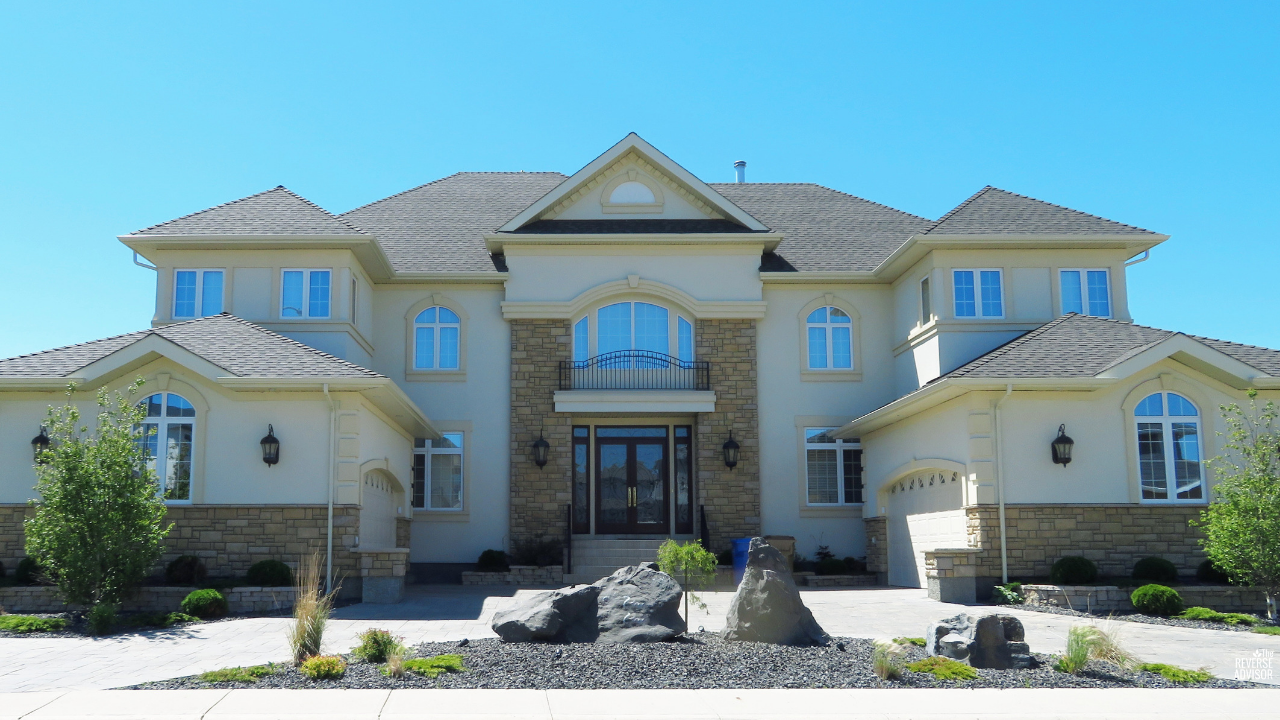Reverse Mortgage Home Purchase Strategy

Most of us spend more than half our income on taxes and interest. Subtract out healthcare, the high cost of housing, and maybe college tuition and it’s no wonder the U.S. savings rate over the last ten years has been as low as 1.9% and is currently 4.8%.1 During retirement, our focus is on minimizing monthly payments and taxes.
This post is about a three-point strategy I teach clients and financial services professionals to minimize monthly payments, including taxes, and increase wealth in retirement. Parts of this Three-Dimensional Reverse Purchase™ strategy are either unknown or misunderstood, but when the three components are done in combination, the difference in quality of life, sense of control, and size of heir’s inheritance is substantial.
The Reverse Purchase Strategy™
- Sell current house, which may not fit lifestyle or needs
- Use a reverse mortgage, and some sales proceeds, to pay for a better-fit home
- Minimize property taxes by taking advantage of CA Propositions 60 or 90
We will unpack all three aspects below, and offer you a free valuable eBook on selling strategies, but first let’s address a few reasons you may not have heard of this.
The key to the strategy is using a reverse mortgage to purchase a home. In the industry, this is known as H4P, which stands for ‘HECM for purchase.’ HECM (home equity conversion mortgage) is a U.S. Federal Government insured reverse mortgage. Because there is a lot of confusion and misinformation about reverse mortgages, financial professionals often don’t recommend them. I recently drafted a survey that I sent to 238 financial services professionals (CFPs, CPAs, attorneys, etc.). More than 58% of respondents either didn’t know you could use a reverse mortgage to buy a house or they said it wasn’t allowed. And the survey revealed other misconceptions, all of which are not true, including…
- Bank takes the house
- Loans are not regulated
- Borrowers are liable if loan balance is more than home’s value
- Spouse does not have survivor rights in the property
Understandably, if a financial professional has misconceptions around reverse mortgages, they won’t be comfortable recommending them. The truth is, reverse mortgages are probably the most regulated loan out there and the government insurance protects the borrower’s title and the lender if the loan balance exceeds the home’s value. Changes the government has implemented over the last 18 months make them even safer.
Now when advisors are faced with the seemingly unsolvable question of what a retired home owner should do when they have a cash flow problem; the only answer seems to be, “Sell the home and rent.” Is our Three-Dimensional Reverse Purchase Strategy™ a better alternative? Let’s look at a hypothetical example over a 10 year time frame. A senior sells their current home for $500,000 and is left with net proceeds of $300,000.
Sell home and rent
- Conservatively invest $300,000, earn 3% after taxes
- Rent is $2,000 per month; landlord increases rent 4% per year
- Monthly rent is taken from investment account – no monthly payment
- Investment account remaining balance in 10 years = $221,465
Downsize, buy new home with a HECM, Prop 60/90
- Buy new home for $475k; $250k reverse mortgage and $225k cash down payment
- Still have $75,000 left over, which is invested and earns 3% after taxes
- Home appreciates 4% per year
- Property taxes, insurance, HOA – estimated at $6,825 per year
- No mortgage payment
- Home value less reverse mortgage balance (equity) = $264,183
- Investment account = $101,238
- Net worth (equity + investment account – property taxes, insurance, HOA) = $297,171
Difference between owning and renting (no house payment in either case) = +$75,706 or 35% better by owning instead of renting. Since 25 million Baby Boomers will rely on Social Security for 90% of their income, that difference is a really big deal; equivalent to maybe three or four years of income.
This is often counterintuitive, especially to heirs. They fear the reverse mortgage will consume their inheritance because they overlook the fact that the house is an appreciating asset and can grow in value faster than the negative amortization from having no monthly mortgage payment. And downsizing doesn’t have to be about getting a smaller home. It may be a matter of eliminating stairs, moving closer to family or gaining other amenities.
Everyone knows Americans haven’t saved enough, in part because they’re living longer than they expected. According to Chris Mayer, professor at Columbia Business School, there is an $11 trillion gap between retirement assets and retirement liabilities. Today, homeowners aged 65-plus have nearly $4 trillion in aggregate home equity2. While there is a big shortfall, many can use this strategy. Following are some points to using a reverse mortgage to purchase and how to minimize property taxes.
Rules to Use a HECM to Buy a Home
- Property must meet FHA requirements; if condo, must be on HUDs approved list, click here
- Property cannot be under construction
- If repairs are needed, they must be completed prior to closing
- Borrowers must move into the property within 60 days of closing
Propositions 60/90
These two California propositions allow senior citizens to transfer the adjusted base year value from their current home to a replacement dwelling. Certain requirements must be met. In general, if you or your spouse is age 55 or older, you or your spouse may buy or construct a new home of equal or lesser value than your existing home and transfer the adjusted base year value of your existing home to your new home if certain requirements are met. This is a one-time-only benefit. Thus, once you have filed and received this tax relief, neither you nor your spouse (if your spouse is a record owner of the replacement dwelling) can ever be granted this benefit again. For more information, click here.
Kent Kopen earned the Reverse Mortgage Specialist designation in March 2007. He co-authored the book, Borrower Smart Retire Rich. Kent is a proud member of the National Reverse Mortgage Lenders Association, NRMLA. Contact (800) 208-1252, kent@theReverseAdvisor.com, www.theReverseAdvisor.com.
For help with Step One of this strategy - Selling Your House - download our free eBook that includes 15 strategies to maximize your sale proceeds while minimizing your stress. Click Free Seller's Guide below.
1 Economic Research, Federal Reserve Bank of St. Louis: https://research.stlouisfed.org/fred2/series/PSAVERT
2 NRMLA Riskspan home equity index



